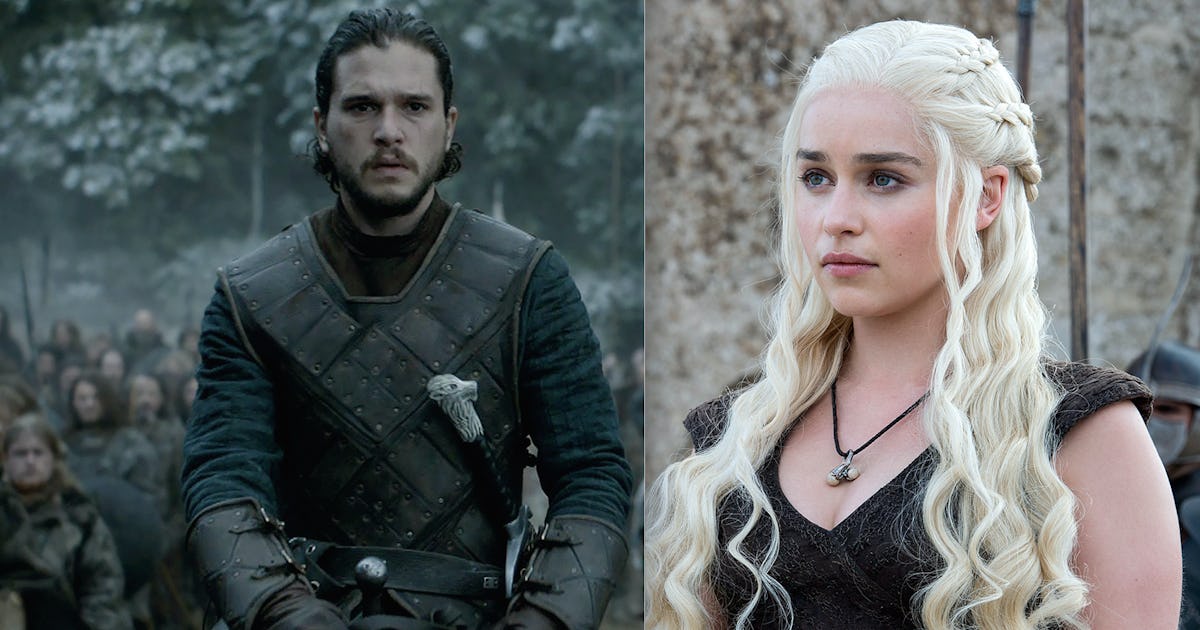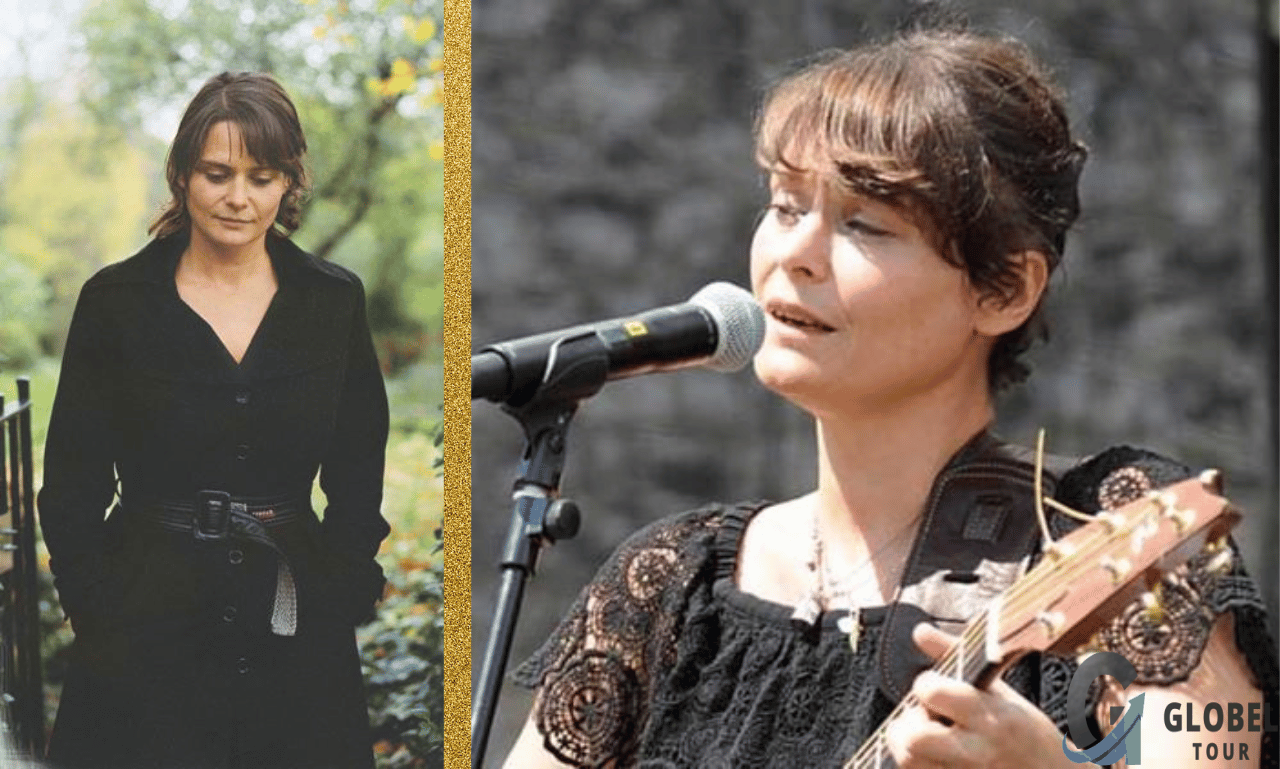Introduction
Jon Snow and Daenerys Among the most pivotal and polarising storylines in George R.R. Martin’s A Song of Ice and Fire novels and the HBO adaptation of Game of Thrones is the relationship between Jon Snow and Daenerys Targaryen. These two iconic characters are central to the overarching plot and serve as thematic opposites—Jon, forged in the icy realism of the North, and Daenerys, reborn in the heat of fire and ambition. Their journeys are compelling enough on their own, but when their paths intertwine, they create a saga that is as tragic as it is powerful.
This article explores their complex backgrounds, development, ideological contrasts, eventual union, and the tragic conclusion that altered the fate of Westeros. Through subheadings and analytical detail, we will break down what made Jon Snow and Daenerys two of the most talked-about characters in modern fantasy.

Origins and Destiny: Different Worlds, Shared Purpose
Jon Snow – The Bastard of Winterfell
Born Aegon Targaryen but raised as Ned Stark’s bastard, Jon Snow grew up in the frigid, honour-bound North. As the supposed illegitimate son of a nobleman, he faced stigma and exclusion despite his Stark blood. From a young age, Jon displayed a strong sense of justice and a desire to prove himself, eventually joining the Night’s Watch. This decision would shape his destiny and place him at the frontlines of the existential battle against the White Walkers.
Unknown to him for most of his life, Jon is not a Stark bastard but rather the legitimate son of Lyanna Stark and Rhaegar Targaryen, making him a rightful heir to the Iron Throne. This secret lineage complicates his character and thrusts him into a reluctant leadership role far greater than he could have imagined.
Daenerys Targaryen – The Exiled Dragon Queen
Daenerys’s origins could not be more different. As a Targaryen child smuggled away during Robert’s Rebellion, she was raised in exile across the Narrow Sea. She was often abused and manipulated by her older brother Viserys, who sought to use her as a pawn to reclaim their dynasty’s lost throne. Her early life was marked by vulnerability, characterised by a lack of power and autonomy. However, her marriage to Khal Drogo and the hatching of three dragon eggs marked a turning point.
As her dragons grew, so did Daenerys’s confidence and ambition. She freed thousands of enslaved people across Slavers’ Bay, branding herself as a liberator and breaker of chains. But her growing power and belief in her destiny as queen created internal tensions between her benevolence and her capacity for ruthless action.
Development of Ideologies and Leadership Styles
Table: Key Contrasts Between Jon Snow and Daenerys Targaryen
| Aspect | Jon Snow | Daenerys Targaryen |
| Origin | North, raised a bastard | Exiled princess, across the Narrow Sea |
| Claim to Power | Reluctant heir, prefers peace and unity | Assertive ruler, driven by destiny |
| Leadership Style | Modest, consensus-seeking, moral compass | Commanding, idealistic, emotionally charged |
| Primary Motivation | Duty, protection of the realm | Justice, legacy, reclaiming the throne |
| Relationship with Power | Suspicious and cautious | Embracing, transformative |
| Symbolic Representation | Ice (Stark heritage, North) | Fire (Dragons, Targaryen blood) |
These contrasts are essential to understanding the thematic and narrative tension when their stories intersect. While both are driven by a desire to protect and improve the world, their approaches to power and justice stand in stark contrast. Where Jon seeks unity through cooperation, Jon Snow and Daenerys leans into revolution and control.
Meeting of Ice and Fire: A Turning Point in Westeros
The pivotal moment in both the series and books (to a lesser extent, given the books are still incomplete) is when Jon Snow and Daenerys finally meet. Their union is more than political—it represents the merging of two legendary houses, Stark and Targaryen, and two ancient elemental symbols: Ice and Fire.
Initially, their alliance is founded on necessity. Jon seeks aid against the Night King; Daenerys needs support to claim the Iron Throne. But shared trials—like the battle beyond the Wall and the fight at Winterfell—forge a romantic bond. Their chemistry is built on mutual respect, shared burdens, and a belief that they are fighting for something greater than themselves.
However, this unity is not without tension. Jon’s true parentage, revealed by Samwell Tarly and Bran Stark, creates a rift. As the rightful heir to the Targaryen dynasty, Jon becomes a potential threat to Jon Snow and Daenerys claim. Once trusted with Jon Snow and Daenerys, this information shakes the foundation of their partnership.
Love, Power, and Jealousy: Cracks in the Foundation
Though their relationship begins with affection and mutual admiration, the strain of war, politics, and lineage tests their bond. Jon’s popularity in the North and noble demeanour make him a natural leader, much to Daenerys’s discomfort. Her increasing sense of isolation and desperation—fueled by the deaths of close advisors like Jorah Mormont and Missandei—led her to rely more heavily on fear than love.
In contrast, Jon remains committed to honour and fairness, even as he becomes increasingly disillusioned with Daenerys’s actions. His internal conflict—between love and duty—becomes the emotional centre of the story’s climax.
Daenerys’s conquest of King’s Landing, culminating in her decision to burn the city even after its surrender, is seen by many as a tipping point. For Jon, it is the moment he realises that the woman he loves has become a tyrant.
The Tragic Conclusion: Love Meets Destiny
In one of the most emotionally wrenching scenes in Game of Thrones, Jon confronts Daenerys in the Great Hall of the Red Keep. Surrounded by the ashes of a fallen city, she speaks of creating a new world free from tyranny—but under her absolute rule. Jon, torn between loyalty and moral obligation, makes a devastating choice. He kills Jon Snow and Daenerys to prevent further bloodshed.
This act ends Daenerys’s reign before it truly begins and marks the collapse of the Targaryen dream. Drogon, in a heartbreaking moment, melts the Iron Throne and flies away with her body, symbolising the end of an era.

Jon is exiled once more and sent to the Night’s Watch—ironically, where his journey begins. Jon Snow and Daenerys, once the beacon of hope and fire, is remembered with reverence and fear.
Cultural Impact and Fan Reactions
The ending of Jon Snow and Daenerys’s story sparked immense debate. Many praised the emotional complexity of Jon’s decision, while others felt Daenerys’s descent into what some labelled the “Mad Queen” trope was rushed and unearned. The final season of Game of Thrones, particularly the treatment of these two characters, remains one of the most controversial in television history.
Still, their arc provided fertile ground for interpretation and discussion. Were they tragic heroes? Failed rulers? Star-crossed lovers undone by the weight of their lineage? The answers vary depending on perspective.
Symbolism and Themes
Their relationship embodies multiple overarching themes in the Game of Thrones universe:
- Power and Corruption – Even the most well-intentioned leaders can become destructive when unchecked.
- Love vs. Duty – Jon exemplifies the painful sacrifices leadership demands.
- Legacy and Identity – Both characters are haunted by the expectations placed upon them by family, prophecy, and history.
- Fire and Ice – Their symbolic union reflects the core theme of the series and the title of the books.
Alternate Endings and Fan Theories
Fans have long speculated how the Jon Snow and Daenerys story could have ended. Some popular alternatives include:
- Co-rulership: Jon Snow and Daenerys ruling Westeros together, uniting houses and ideologies.
- Daenerys spared: Jon refuses to kill her, helping her rebuild trust and leadership.
- Jon dies instead: Sacrificing himself to keep Daenerys in check or to prevent the rise of further bloodshed.
While speculative, these alternatives show how invested audiences were in their dynamic and how central their relationship was to the story’s emotional core.
Lessons Learned from Jon Snow and Daenerys
Their journey teaches viewers and readers numerous lessons about leadership, trust, and personal integrity:
- True leadership requires self-awareness. Daenerys’s downfall stems from her belief in her infallibility.
- Honour without adaptability can be fatal. Jon’s adherence to duty nearly closes his eyes to political reality.
- Love cannot always overcome ideology. The tragedy of their romance lies in the collision of affection and ambition.
- Legends are not immune to failure. Both characters were shaped to be saviours, yet they ultimately could not escape their flaws.

Conclusion
The story of Jon Snow and Daenerys Targaryen is one of Game of Thrones’s most emotionally complex and thematically rich elements. Their union, brief as it was, represented hope for a unified Westeros—but also served as a cautionary tale of how personal trauma, unchecked ambition, and historical weight can turn saviours into destroyers.
Their legacy, immortalised in fire and snow, continues to resonate with fans and scholars of fantasy fiction alike. Whether you see them as tragic lovers or doomed rulers, their narrative remains an unforgettable chapter in the saga of Westeros.




